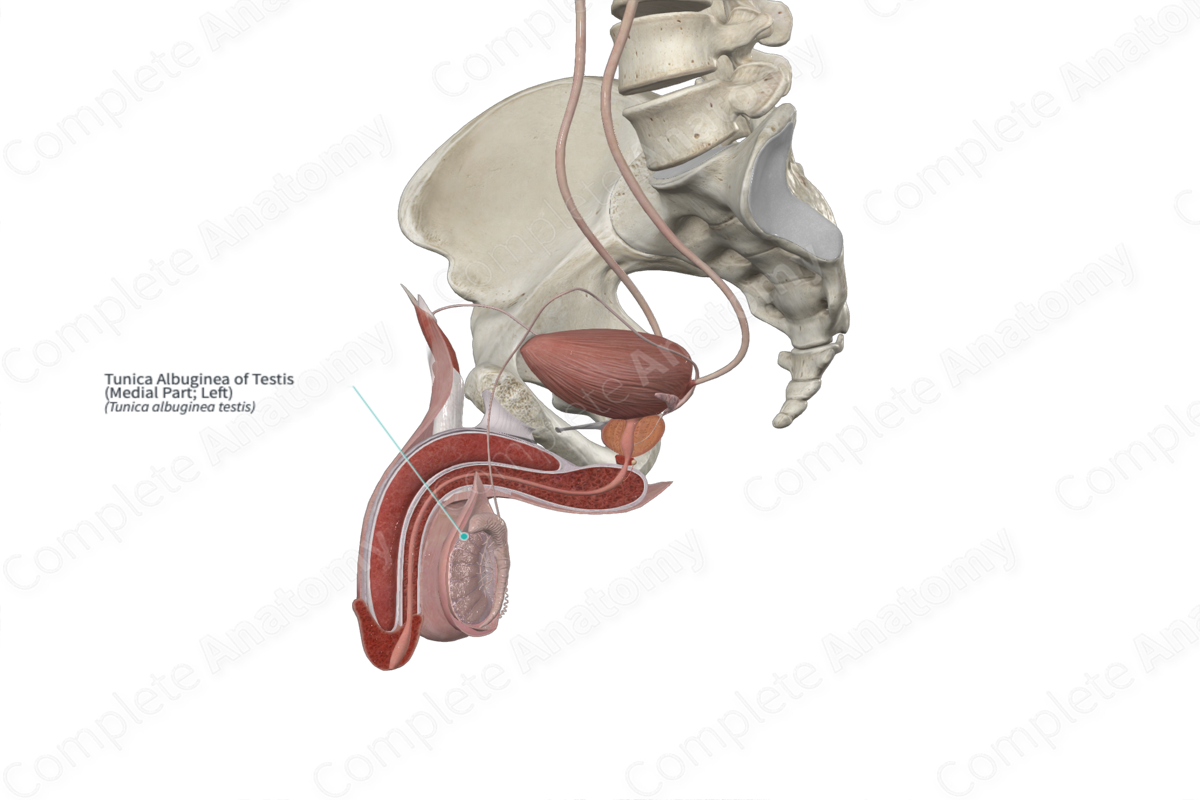
Structure/Morphology
The tunica albuginea is the intermediate layer of three layers that surround the testis. It is composed of bundles of dense white collagen fibers.
Key Features/ Anatomical Relations
The tunica albuginea becomes slightly thickened posteriorly as the mediastinum of the testis. Blood vessels, lymphatics, and genital ducts enter and leave the testis at the mediastinum.
Function
The presence of contractile cells within the tunica albuginea suggests that it is involved in:
—the transport of spermatozoa (immature sperm cells) from the testis to the epididymis;
—the maintenance of interstitial pressure in the testis;
—the maintenance of blood flow through the testis (Middendorff et al., 2002).
References
Middendorff R, Muller D, Mewe M, Mukhopadhyay AK, Holstein AF, Davidoff MS. The tunica albuginea of the human testis is characterized by complex contraction and relaxation activities regulated by cyclic GMP. J Clin Endocrinol Metab. 2002;87(7):3486-99.
Learn more about this topic from other Elsevier products
Tunica Albuginea

The tunica albuginea is a bi-layered structure with a 360° inner circular and a 300° outer longitudinal layer which is the buttress against the sinusoidal wall to seal off the emissary veins which pass obliquely along the inner and outer longitudinal layer, an extension from the ischiocavernosus and bulbospongiosus muscles.



